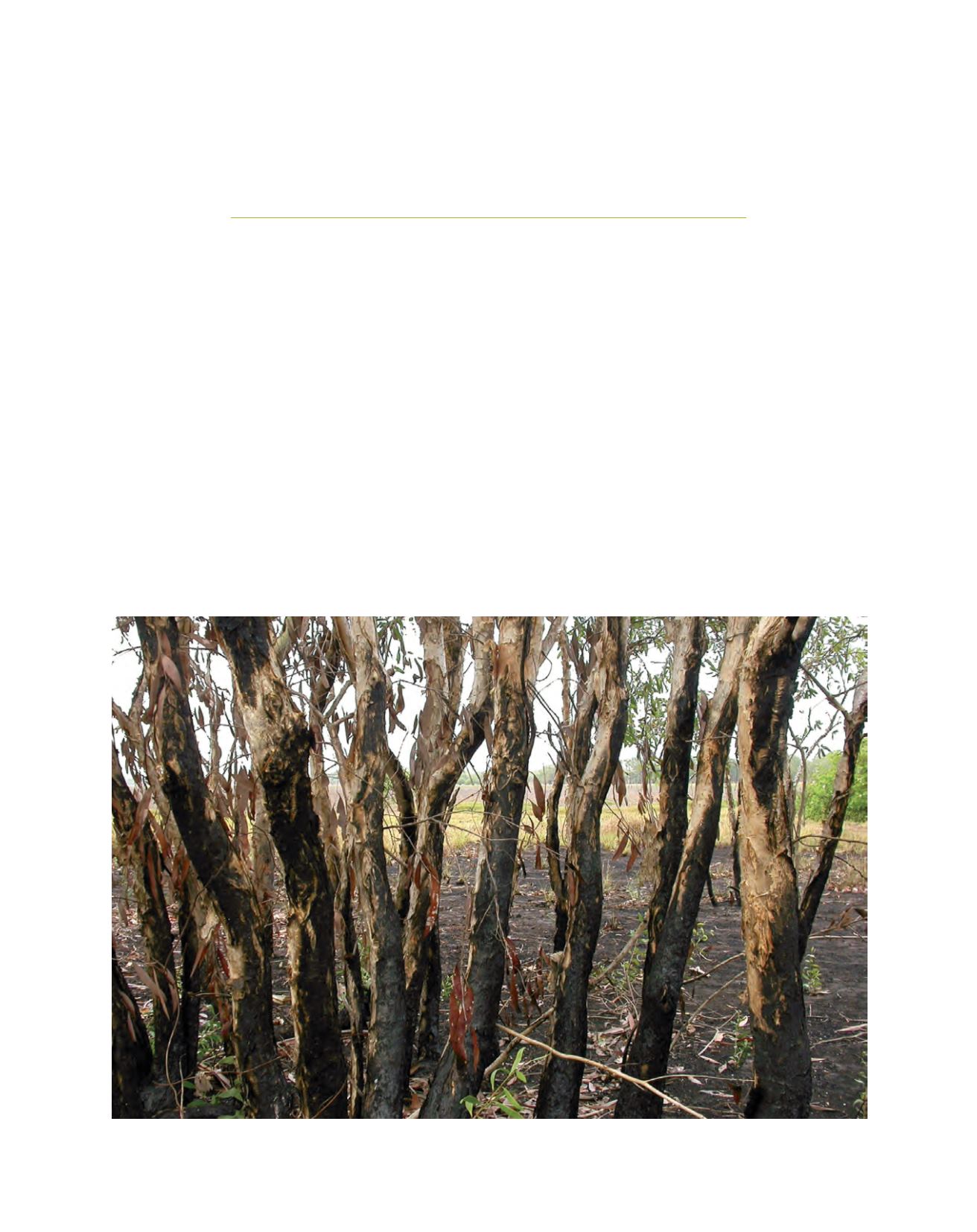

[
] 231
Indigenous peoples, fire and
forest management in Australia
Cathy J. Robinson, Alan N. Andersen, Ashley Sparrow, Marcus B. Lane, Rosemary Hill and Michael Battaglia,
Greenhouse Gas Abatement, Sustainable Agriculture Flagship, CSIRO, Australia
F
orests and their plants and animals continue to be integral
to Indigenous peoples’ livelihoods and cultural identity in
many parts of Australia. They provide cultural and ecologi-
cal landscapes that nourish deep cultural and spiritual links with
the land, in turn influencing the natural diversity that exists in
many forest ecosystems.
1
Finding new and better ways to access
resources to manage and connect to forests that lie within their
traditional estates is a major priority and challenge for many
Indigenous communities. Yolngu elder Joe Yunupingu explains the
interconnection between Indigenous peoples and their country: “I
care for fire. The fire burnt only traditional way. Because we look
after animals, birds and land. The land is real important for us.
Our lands... We look after the animals, eat them not to waste it...
That’s the law for the Yolngu people.”
2
Some of the opportunities and challenges faced by
Indigenous peoples in their efforts to access forests
reflect the uniqueness of forest ecosystems in Australia.
The country’s forest estate consists largely of
Eucalyptus
-
and
Acacia
-dominated woodlands and open forests
in sub-humid and semi-arid regions, including the
seasonal tropics,
3
and these include some of the world’s
most fire-prone ecosystems. Fire plays a critical role in
the geographical range and structure of vegetation types
in all of Australia’s forest ecosystems, and has been a
management tool used among Indigenous peoples over
millennia.
4
Regionally unique mosaics of unburned,
early burned and later burned patches of landscape
created by local Indigenous seasonal burning activi-
Burned patch of
Melaleuca
forest
Image: Mat Gilfedder
















